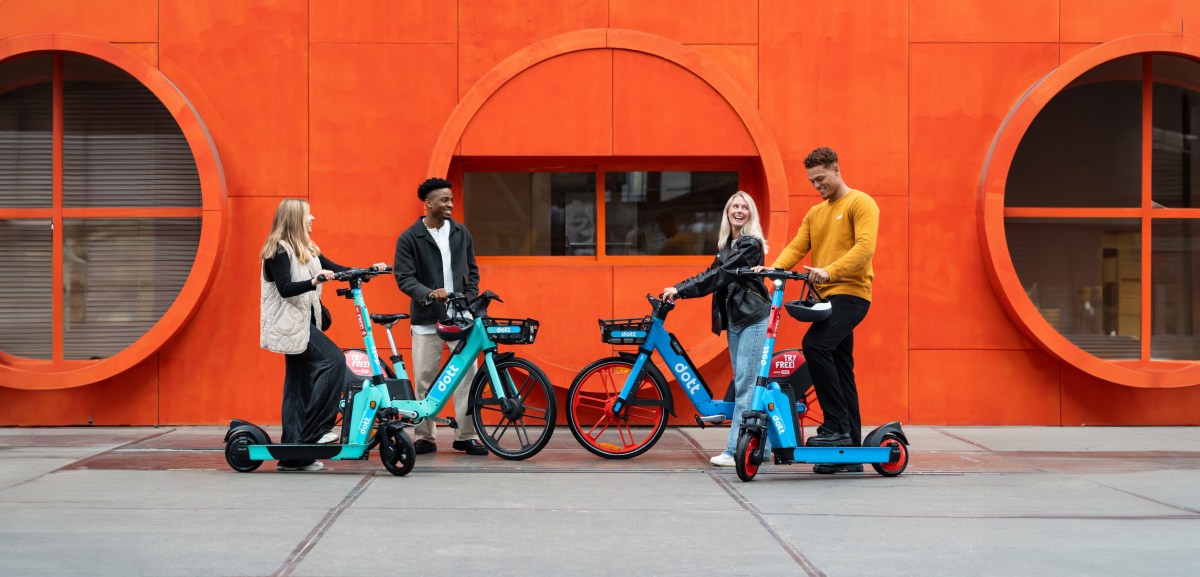Tier and Dott, two leading European scooter- and bike-sharing services, are becoming one service called Dott. The two startups have already laid out plans to merge and form a single company back in January 2024.
With this merger, the companies didn’t want to build a conglomerate of micromobility services; the operation was all about scale. With razor-thin margins, micromobility is a difficult industry, and scale is an important element to improve the unit economics and grow the fleet of available vehicles to better compete with the leader in the space, Lime.
“When we merged the two companies, we wanted to operate as one company, one technology stack, one set of operating practices everywhere; just one company not two companies,” Dott CEO Henri Moissinac told TechCrunch.
That’s why the company is moving everything to a single app and a single fleet of vehicles for the end consumer, too. Tier users will progressively be redirected to the Dott app on a city-by-city basis. The migration should be done by March 2025.
“If you’re in a city where Tier operated and Dott did not operate, the users have to download the new app. If you have the latest app from Tier, it’s just a couple of clicks. If not, you have to download and reregister,” Moissinac said.
Tier electric bikes and scooters aren’t going anywhere. They will be refreshed with Dott stickers to cover the Tier logos. You may have seen that change in some cities where both Tier and Dott were available.
“What has been a big challenge was to bring the two fleets together on one technology stack, rebuild our standard operating practices … what we’ve seen is that some things were very well done here, some things were well done there, and we are trying to bring the two together,” Moissinac said.
The new Dott fleet covers 427 cities across Europe and the Middle East; the overlap was quite small, as Dott and Tier were just competing in 17 cities. Overall, it represents around 250,000 electric bikes and scooters.
Over the last year, Dott and Tier had a bit more than 10 million unique riders who used these mobility services for 100 million trips. So that’s 10 trips per rider on average with some very frequent users and some customers who just tried the service once. And the company thinks this is one of the most important metrics going forward.
“Our strategy is very much around locals. We are a local service for the locals with frequent riders. The most important metric for me is the number of rides per active rider per month,” Moissinac said.
As part of this strategy, the number of rides is growing faster than the company’s revenue as Dott has been promoting passes to increase recurring usage. For instance, in Paris, you can buy a €4.99 pass so that all your rides for the next 30 days cost a flat fee of €1.75 per ride.
When Dott and Tier announced the merger, they also raised €60 million (around $67 million at current exchange rates). There is no funding round with Monday’s announcement. “We’re fine with cash,” Moissinac said.
“We don’t need more cash, but we have opportunities we could unlock if we invest a bit more cash. I don’t know if we do it now or later … Typically, in the winter, it’s a good time to think about your strategy for the next year,” he added.

